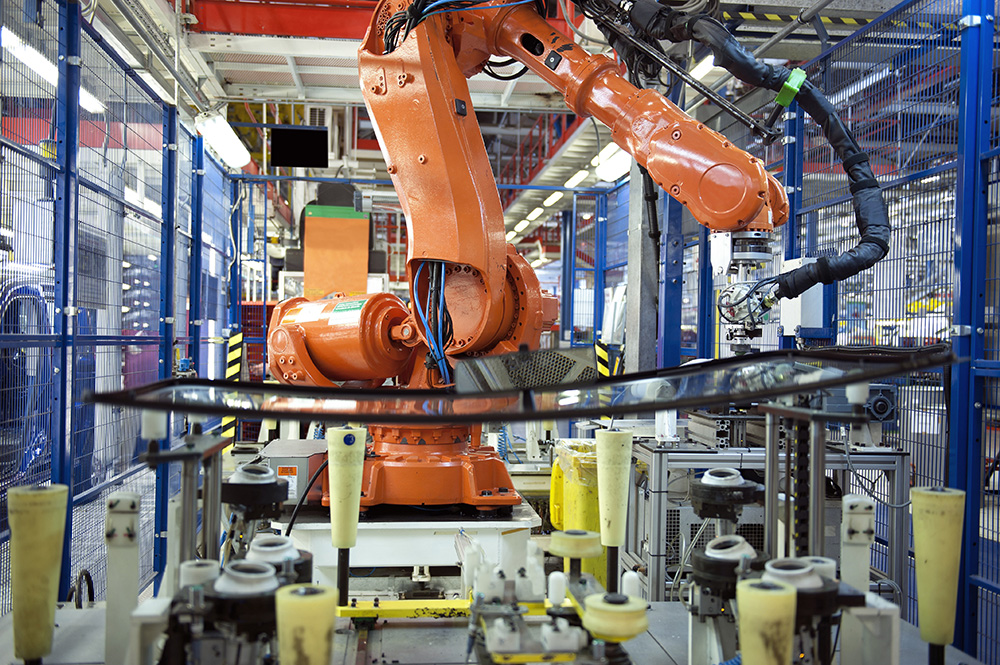The manufacturing industry continues to transform, with manufacturers across every sector incorporating more advanced and innovative technologies like industrial robots. Manufacturing robots continue to increase in implementation and integration with the global robot market enjoying steady growth. Among more traditional robot solutions one type of robot has seen an impressive surge in adoption in recent years: cobots, short for collaborative robots, distinguish themselves by working in proximity with, rather than apart from, human workers.
Cobots offer a number of compelling advantages for a variety of industries and applications but welding has emerged as a particularly compelling use-case for many fabricators seeking to maximize their productivity. Laser welding, well-established for its speed and reliability in both handheld and automated solutions, offers similar advantages when paired with a welding cobot. But how do you choose between a laser welding cobot and a traditional laser welding robot?
Advantages of Laser Welding Cobots
Laser Welding Cobot Flexibility
Traditional robots are best utilized for making high volumes of identical welds on identical parts, particularly as part of a larger assembly line. By comparison, laser welding cobots offer considerably more flexibility — programming a laser welding cobot for a new welding task is significantly faster and does not require extensive retooling. This adaptability enables fabricators to deploy cobots for a variety of welding applications and seamlessly transition to different tasks as needed.
Laser Welding Cobot Productivity
Laser welding robots and cobots offer different relative productivity gains in different applications. One example is large parts that require several welds and must be reoriented in between welding stages. While a traditional laser welding robot could create excellent weld joints in these kinds of parts, the difficulty of automation makes many traditional robotic solutions hard to justify. Even when there are many smaller parts to be welded, laser welding cobots can offer more productivity compared to handheld solutions by addressing multiple parts as part of a single program.
Laser Welding Cobot Programming

Most welding cobots can be programmed by manually guiding them through job steps.
Traditional robots are typically programmed using specialized programming languages and require skilled technicians or engineers to set up and maintain.
Cobots are designed to be more user-friendly and can be programmed and operated by non-experts. Many welding cobots feature intuitive interfaces, such as teach pendants or graphical programming software, that allow workers to easily teach them new tasks or adjust their behavior as needed. Features like teach-by-touch programming enable operators to quickly teach the robot by manually moving it through the steps of the job.
Laser Welding Cobot Safety
Traditional robots require strict safety protocols, including safety cages, fencing, and interlocks, to prevent accidents and ensure the safety of human workers. They often operate in separate areas from human workers to minimize the risk of injury.
Cobots are equipped with advanced safety features, such as collision detection sensors, speed and force limiting mechanisms, and power and force limiting technology, that allow them to work safely alongside humans. They are designed to stop or slow down if they detect a human in their workspace, reducing the risk of injury.

The LightWELD Laser Welding Cobot System supports an integrated laser safety enclosure.
As with all welding methods, precautions must be taken to ensure laser welding safety regardless of the type of robot. Laser welding cobot operators should wear correctly rated laser safety glasses at a minimum, as well as a laser safety welding mask when standing closer to in-progress welding operations. For bystander safety, cobots must be installed in a laser safe enclosure. For easier integration, laser welding cobots like the LightWELD Cobot System may offer laser safety enclosures that integrate directly with the system itself.
Laser Welding Cobot Installation & Integration
Traditional robots may require significant installation and integration efforts, including the design and setup of safety cages, fencing, and other safety measures to comply with industry standards and regulations. Integration with existing manufacturing systems and processes may also require additional time and resources.

Traditional industrial robots are heavy-duty equipment that can be challenging and expensive to integrate.
Cobots are designed to be easier to install and integrate into existing workspaces and workflows. They typically have smaller footprints and built-in safety features, reducing the need for complex safety measures. Laser welding cobots systems with wheels or leveling castors can even be transported around the shop floor as needed by a single person. By offering plug-and-play functionality and user-friendly interfaces, cobots typically also enable faster deployment and implementation.
Laser Welding Cobot Cost
Traditional industrial robots have a higher upfront cost compared to cobots due to their larger size, higher payload capacity, and specialized capabilities. These costs can include the robot arm, controllers, end-effectors (such as grippers or welding torches), safety equipment, and installation.
Cobots almost always have a lower initial cost compared to traditional robots, although this can vary depending on the specific model, payload capacity, and features. Cobots present a more affordable alternative to traditional robots, especially for small and medium-sized businesses or fabricators with limited budgets.
Getting Started with a Laser Welding Cobot Solution
Choosing between a traditional laser welding solution and a laser welding cobot is a big decision. If you need help deciding, an IPG laser welding expert is ready to help. Getting started is easy — send us a sample, visit one of our global application labs, or just tell us about your application.




